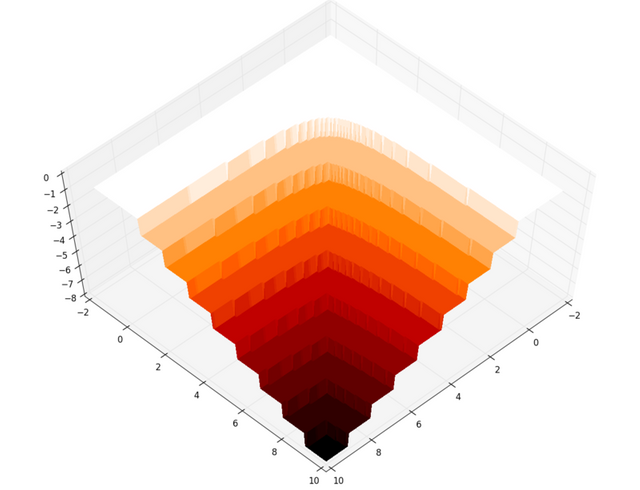Mastering Calculus - What's Your Limit?
In this article, we undress the idea of limit in calculus. Although potentially a puzzling concept, the limit is nothing more than a simple building block.
If you think calculus has lots of limits, then you are not too far off base. No really. Calculus comprises two fundamentally distinct, albeit, related branches: differential and integral. The former deals with derivatives, and these are nothing more than a very special kind of limit. Here we look at this fundamental concept and how it lays the groundwork for the calculus.

The Limit Undressed
When we think of a limit, we are usually thinking of some border which serves as the end of something, a maximum point, or boundary. In calculus, the idea is similar. A limit is a point that is reached by one variable when the other variable takes on values closer and closer to some predetermined one. The previous sentence might sound like some typical mathematical mumbo jumbo but really is just saying that as one variable touches, or gets very close to, one boundary, then the other variable touches, or gets very close to, another.
Specifically, let y = f(x) be a function. To say that the lim(x--->3) f(x) = 4 (read "the limit as x approaches 3 of f(x) is 4") simply means that as the independent variable x gets closer and closer to values of 3, then y, the dependent variable, gets closer and closer to 4. There is a more formal definition of this idea involving the Greek letters epsilon and delta, and some absolute value symbols, but that really only obscures the idea of this basic concept, at least until it is fundamentally understood. Here we will look at the limit from a visual perspective so that you can really take hold of this concept without being intimidated by it.
We can picture the limit concept if we appeal to the graphical representation of a function. Let us take the simplest of all functions: a straight line. The equation of a straight line in slope-intercept form is y = mx + b, in which m is the slope and b is the y-intercept. Let us give specific values to both of these quantities so that we can visualize what is happening with a specific limit. Let m = 2 and b = 4 in the previous general equation so that y = 2x + 4.
Visualizing the Limiting Process
Given y as above, let us examine lim(x--->2) f(x). Bear in mind that the symbol "--->" does not mean that the independent variable ever necessarily reaches the intended limit target. That is, this symbol is not equivalent to the "=" sign, although in many instances to find the limit, we can substitute the limiting value in the function to get the functional limit. In this particular example in which y = 2x + 4, we can actually do that substitution to get the functional limit of 6. Unfortunately, life does not always go this smoothly, and neither does the calculus.
The power of the concept of limit lies in its ability to predict what happens when the independent variable cannot assume the limiting value, because if such were to occur, the resulting expression would be meaningless, as occurs for example when we divide by 0. The derivative, which is one of the key building blocks of the entire calculus, is such a limit in which, were we to substitute the actual limiting value for the independent variable, we would end up with division by 0, and consequently a meaningless expression.
Let us go back to y = 2x + 4 and see what happens as x gets closer and closer to the value of 2 without ever taking on the specific value. Let x lie in the interval between 1.999 and 2.001. These values are obviously very close to 2 but not equal to it. If we confine x to the interval (1.999, 2.001), then x can be thought of being trapped within a space of width 0.002. If we plug the endpoints of this interval into the function then we get that y = 2(1.999) + 4 = 7.998 at the lower end, and y = 2(2.001) + 4 = 8.002 at the higher end.
The Limit in a Nutshell
Now we get to the crux of the matter. If we form a rectangle using the interval length as the width, and the difference in the functional values at these endpoints as the height, then what the limit says is that whenever x is trapped within the "walls" of this rectangle, then the function y is trapped within its height of 8.002 - 7.998 or 0.004 units. As we shrink the interval length, that as x gets closer and closer to 2, then the height of the rectangle shrinks as well, but we are always guaranteed to find our function, or segment of the curve if you think of this graphically, inside these limits---pun intended.
Of course, as you might have surmised, this treatment looks at a very simple limit. Its purpose, however, serves to illuminate this otherwise potentially confusing topic (certainly confusing if at first blush you introduce the abstract epsilon/delta definition stated earlier). Once the limit is seen undressed and naked, for lack of a better term, understanding sets in and the student can then delve more deeply into its more abstract aspects.
References
- Ryan, Mark. Calculus for Dummies. New Jersey: Wiley Publishing Inc.
Hi @rufu!
Your post was upvoted by utopian.io in cooperation with steemstem - supporting knowledge, innovation and technological advancement on the Steem Blockchain.
Contribute to Open Source with utopian.io
Learn how to contribute on our website and join the new open source economy.
Want to chat? Join the Utopian Community on Discord https://discord.gg/h52nFrV